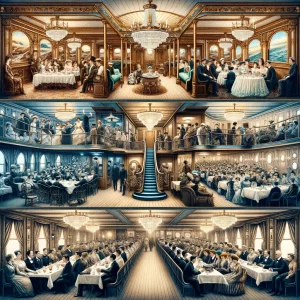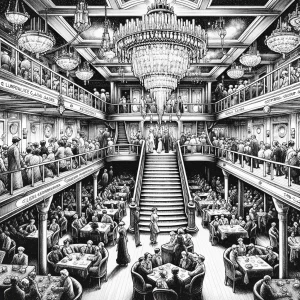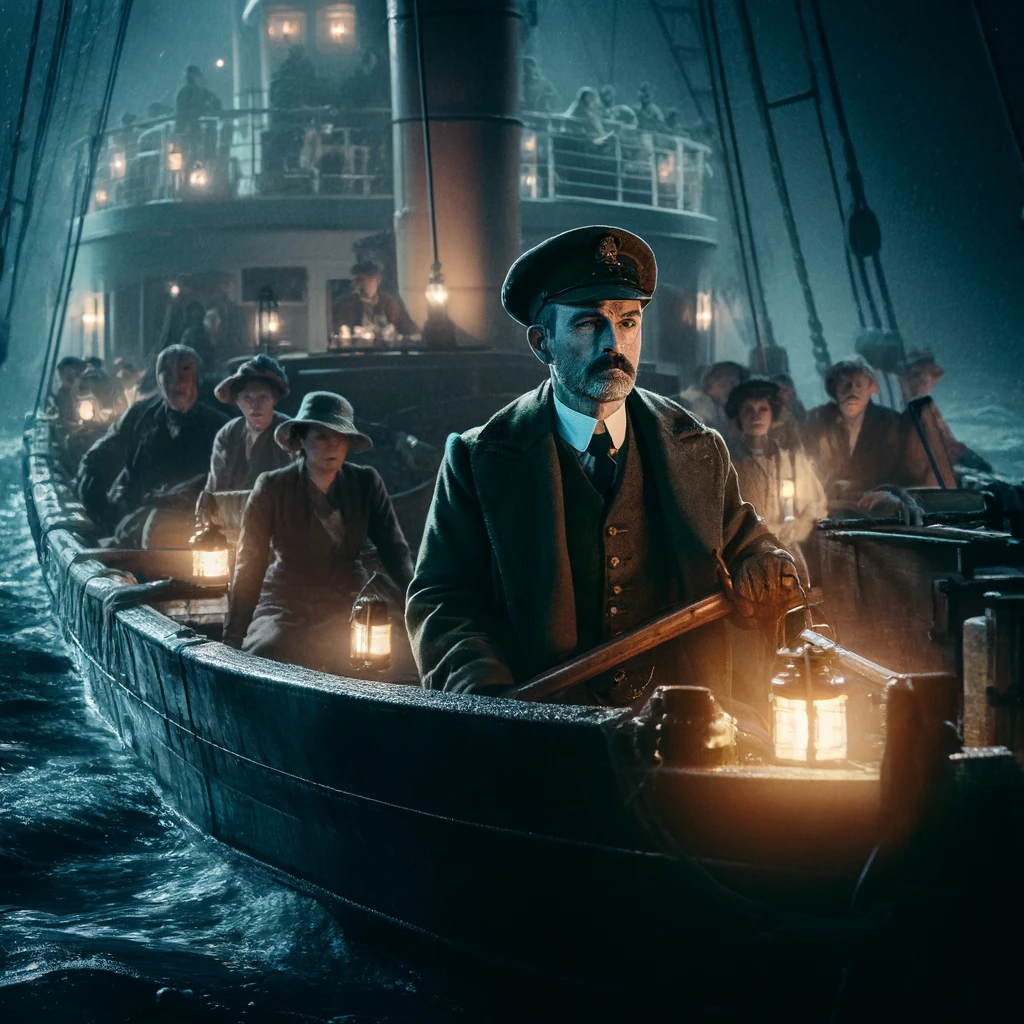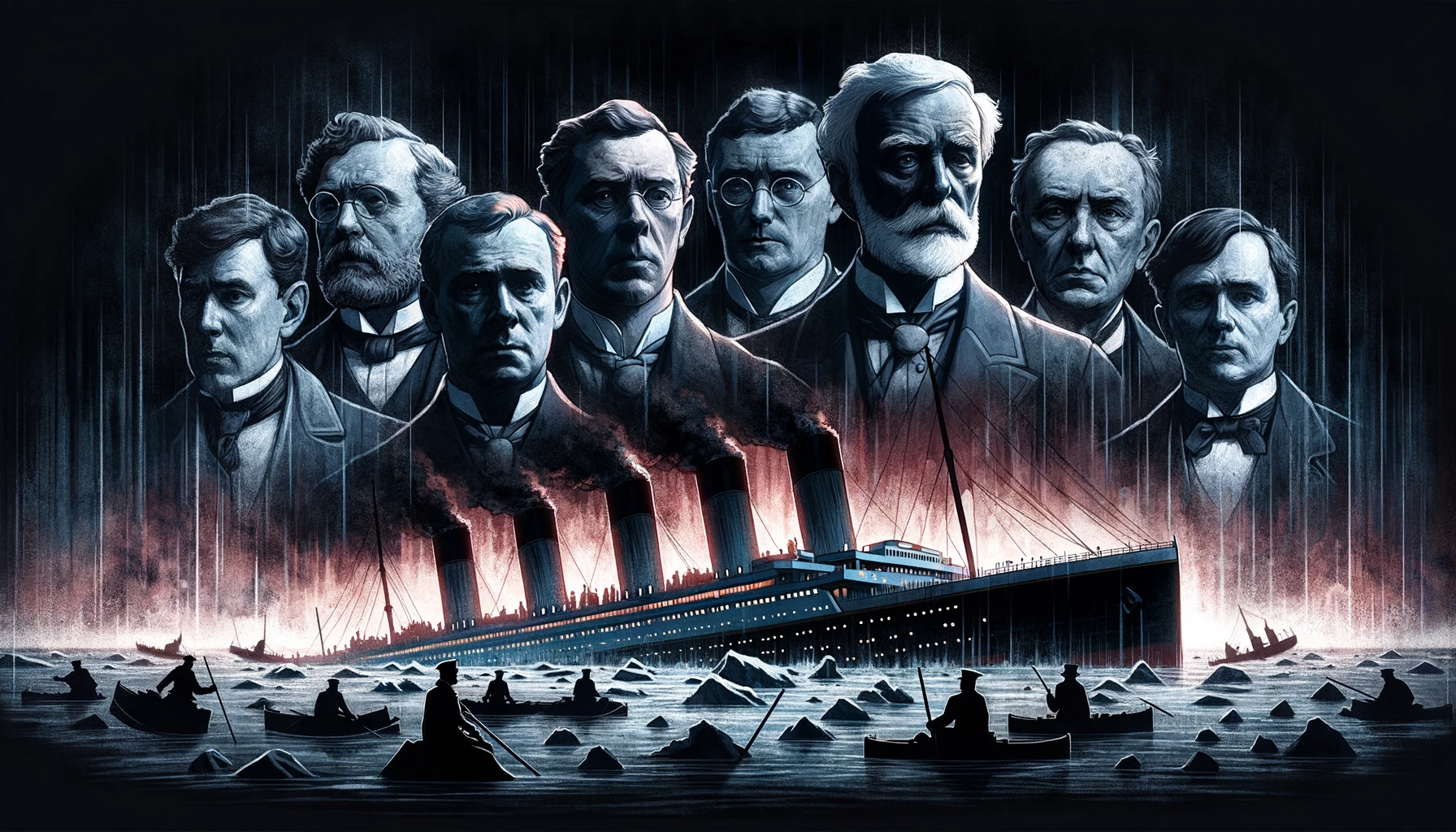The Titanic: A Voyage of Dreams and Disparities
 As the massive hull of the Titanic sliced through the chilly waters of Southampton on April 10, 1912, three passengers, each from a different class, stood aboard the deck. First-class passenger John Astor IV marveled at the luxury around him, envisioning the business opportunities awaiting in New York. Middle-class teacher Lawrence Beesley absorbed the details of the ship, eager to share his experiences through letters. In third-class, young Irish immigrant Annie Kelly clutched her small suitcase, filled with hopes for a new life in America. Their journals and letters offer us a window into the world of Titanic, beyond just its tragedy.
As the massive hull of the Titanic sliced through the chilly waters of Southampton on April 10, 1912, three passengers, each from a different class, stood aboard the deck. First-class passenger John Astor IV marveled at the luxury around him, envisioning the business opportunities awaiting in New York. Middle-class teacher Lawrence Beesley absorbed the details of the ship, eager to share his experiences through letters. In third-class, young Irish immigrant Annie Kelly clutched her small suitcase, filled with hopes for a new life in America. Their journals and letters offer us a window into the world of Titanic, beyond just its tragedy.
The Titanic, often remembered for its catastrophic end, was a marvel of its age, designed to be the largest and most luxurious ship ever built. This narrative explores not just the ship itself, but the vibrant human stories aboard—from the opulent decks of first-class to the cramped quarters of third-class. What were the expectations and realities for each class on this ill-fated voyage?
Life Before the Voyage
The elite passengers of the Titanic’s first-class viewed the ship as a floating palace. John Astor, one of the wealthiest individuals aboard, wrote in a letter, “Every luxury one could imagine is provided.” The grandeur was a continuation of their lavish lifestyles, with the journey seen as both a social gathering and a display of affluence.
Second-class passengers, like teacher Lawrence Beesley, experienced comfort that rivaled first-class on older ships. In his diary, Beesley noted, “The second cabin of the Titanic leaves nothing to be desired.” These passengers, often professionals or businessmen, sought both comfort and value.
For third-class passengers like Annie Kelly, the Titanic promised a path to new opportunities. In her last letter from Ireland, she expressed mixed emotions: “I am excited for the journey but scared of what lies ahead.” Third-class accommodations were basic but a step towards their American dream.
Boarding and First Impressions
John Astor IV observed the swift and efficient boarding process for the first-class, remarking on the “personal stewards for each suite.” In contrast, Annie Kelly described a more chaotic experience, “It took hours to get aboard, and the space is cramped with so many families and faces.”
The disparity in initial impressions was stark. Astor wrote of being “struck by the grand staircase and lavish decorations.” Meanwhile, Beesley appreciated the “cleanliness and orderly arrangement” of his cabin, and Kelly was “overwhelmed by the sheer size of the ship.”
The Journey Begins: Life Onboard the Titanic
The first-class passengers experienced unparalleled luxury. John Astor IV enjoyed gourmet meals and private parties, his days filled with elegance. His journal glows with tales of smoking rooms and card games. Comfortable and dignified, second-class life was pleasant and full of activities, from music recitals to educational lectures, as noted by Lawrence Beesley in his engaging diary entries. By contrast, Annie Kelly’s letters reveal a lively atmosphere in third class, with music and dancing, and a strong sense of community among the passengers.
Contrasts and Interactions
Onboard the Titanic, the boundaries between first, second, and third classes were both physical and symbolic, represented by the lavish amenities available to some and the modest provisions for others. However, the ship also provided rare moments of intersection between these worlds, offering glimpses into the lives of others that would otherwise never occur on land.
The design of the Titanic inherently encouraged segregation, with different dining saloons, recreation areas, and even deck spaces strictly allotted per class. First-class passengers enjoyed exclusive access to the ship’s swimming pool, gymnasium, and the famed à la carte restaurant, which boasted cuisine prepared by chefs from the finest Parisian hotels. Second-class passengers, while provided with their own library and smoking rooms, often caught fleeting glimpses of the opulence above as they passed by the grand staircase leading to first-class decks.
Despite these barriers, the promenade decks and certain communal areas provided spaces where different worlds briefly collided. Children from all classes played together, their games momentarily dissolving the rigid class distinctions. During such play, first-class children might share toys with third-class peers, under the watchful eyes of nannies and stewards.
Shared Experiences and Emergency Preparations
As the voyage progressed, the interactions grew under less joyful circumstances—during lifeboat drills, passengers from all classes gathered, their apprehensions about the sea’s dangers momentarily leveling the social hierarchy. These drills, though brief and regimented, allowed passengers to witness the shared vulnerability of all aboard the mighty Titanic.
Stories of Kindness and Curiosity
Anecdotes from survivors recount moments of kindness and curiosity that transcended class boundaries. One second-class passenger noted how a first-class gentleman lent his binoculars to a group of third-class children, allowing them to marvel at the distant horizon. Another account tells of a third-class mother who was invited by a second-class family to join them for tea, sharing stories of their respective homelands.
| Did You Know?
The Titanic featured an onboard swimming pool, a rarity at the time, available only to first-class passengers—a symbol of the luxurious amenities that marked the stark differences between classes. |
As the Titanic sailed towards its tragic destiny, the dreams and realities of its passengers reflected the social divisions of the age. The ship, a floating microcosm of society, was bound for disaster, yet for a few days, it represented a world of possibilities. Reflecting on the voyage, survivor Lawrence Beesley later wrote, “The Titanic was called unsinkable, but its story shows us that man’s pride and nature’s power are a precarious mix.”
References
Astor IV, John Jacob. Letters and Journals.
Beesley, Lawrence. The Loss of the SS Titanic.
Kelly, Annie. Letters from the Titanic: The First Voyage.



0 Comments